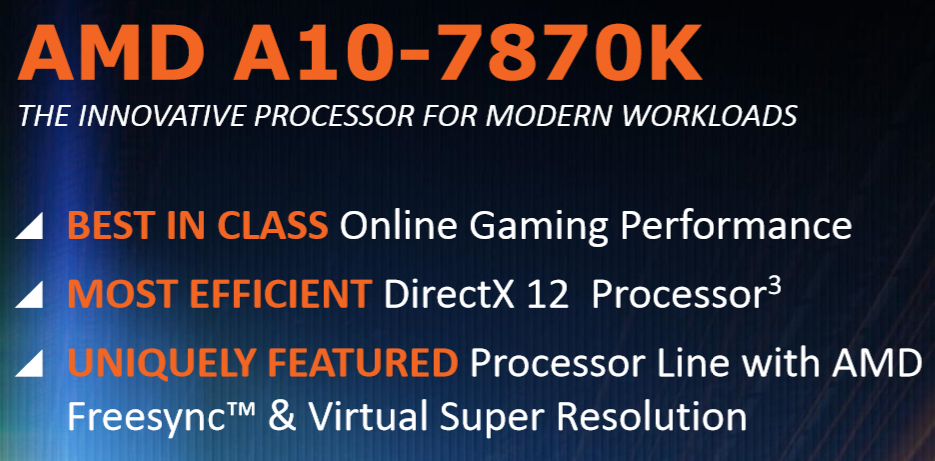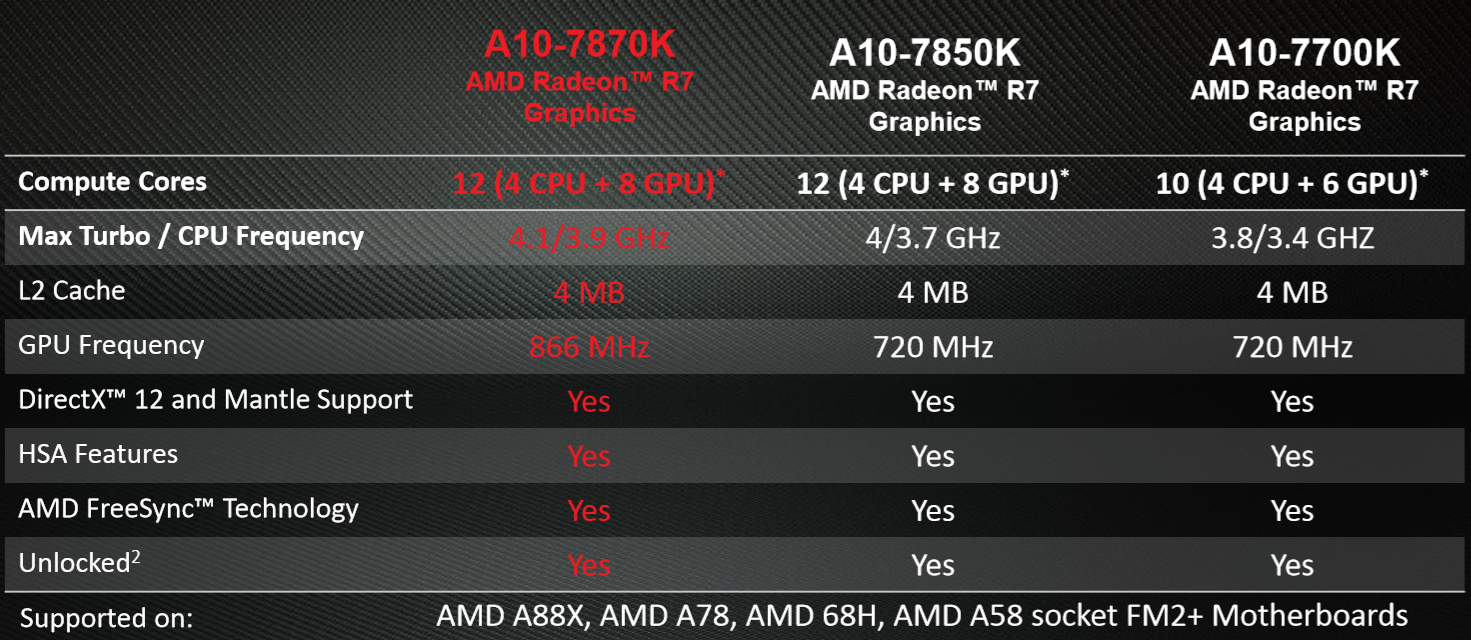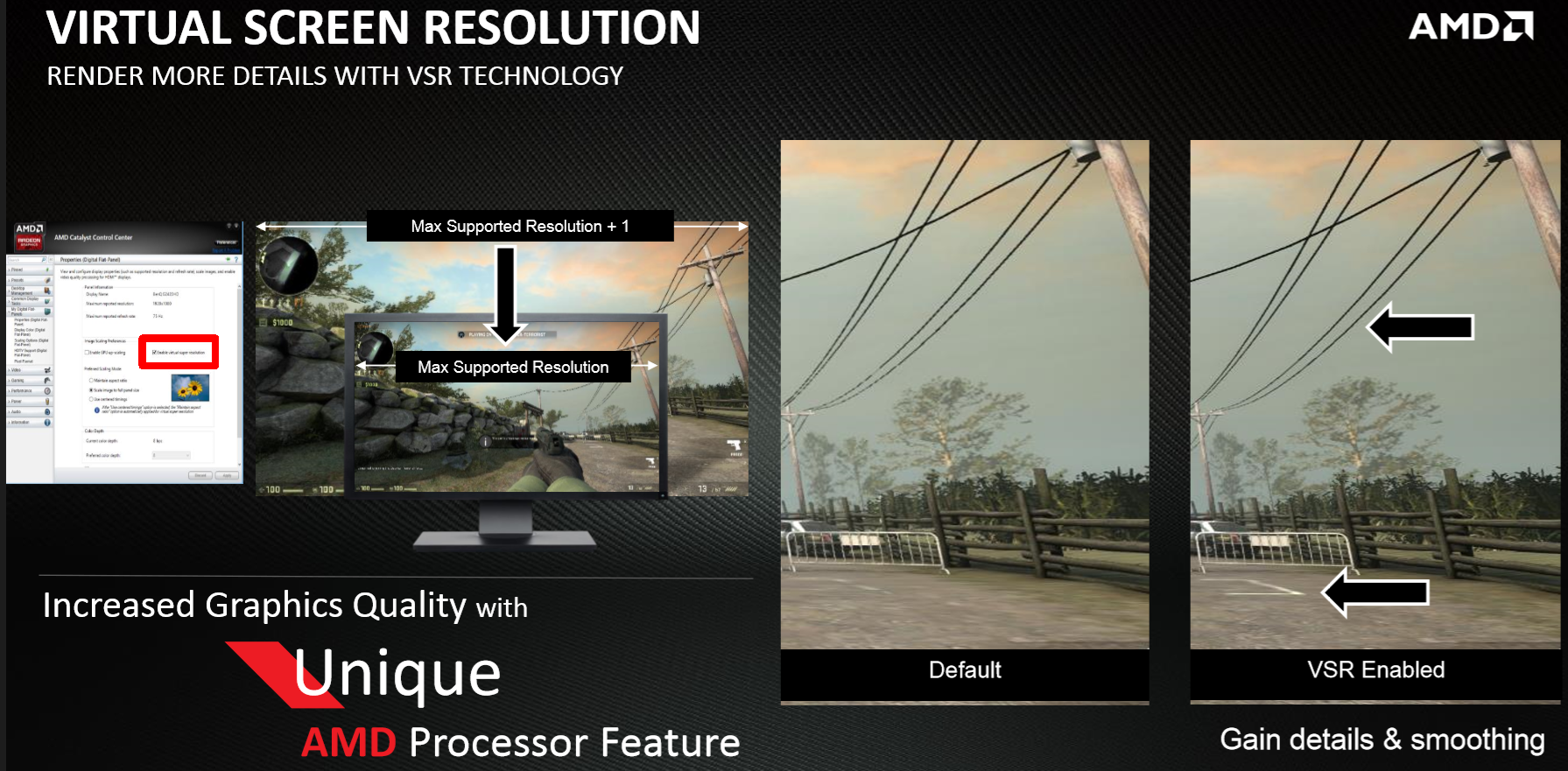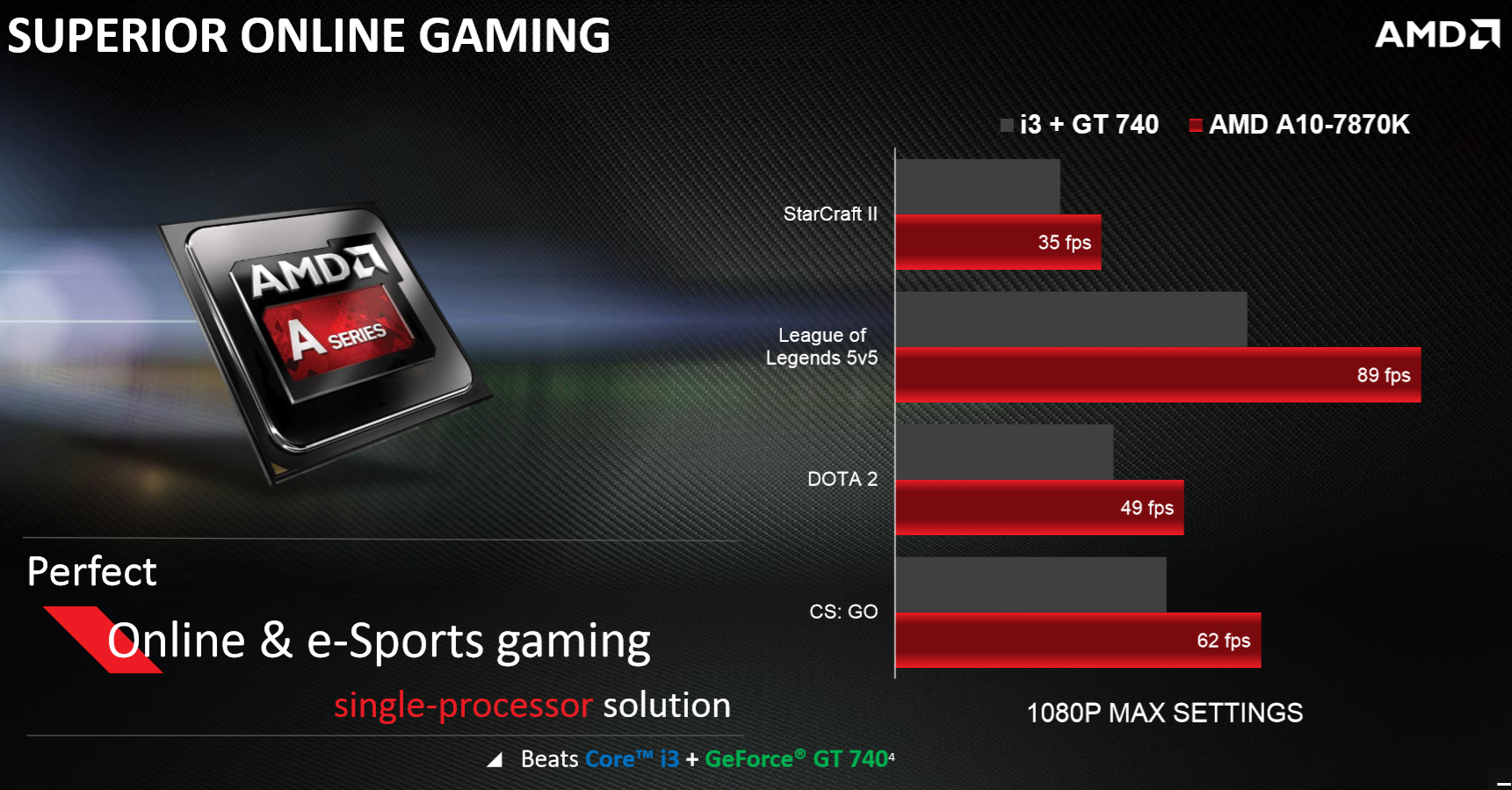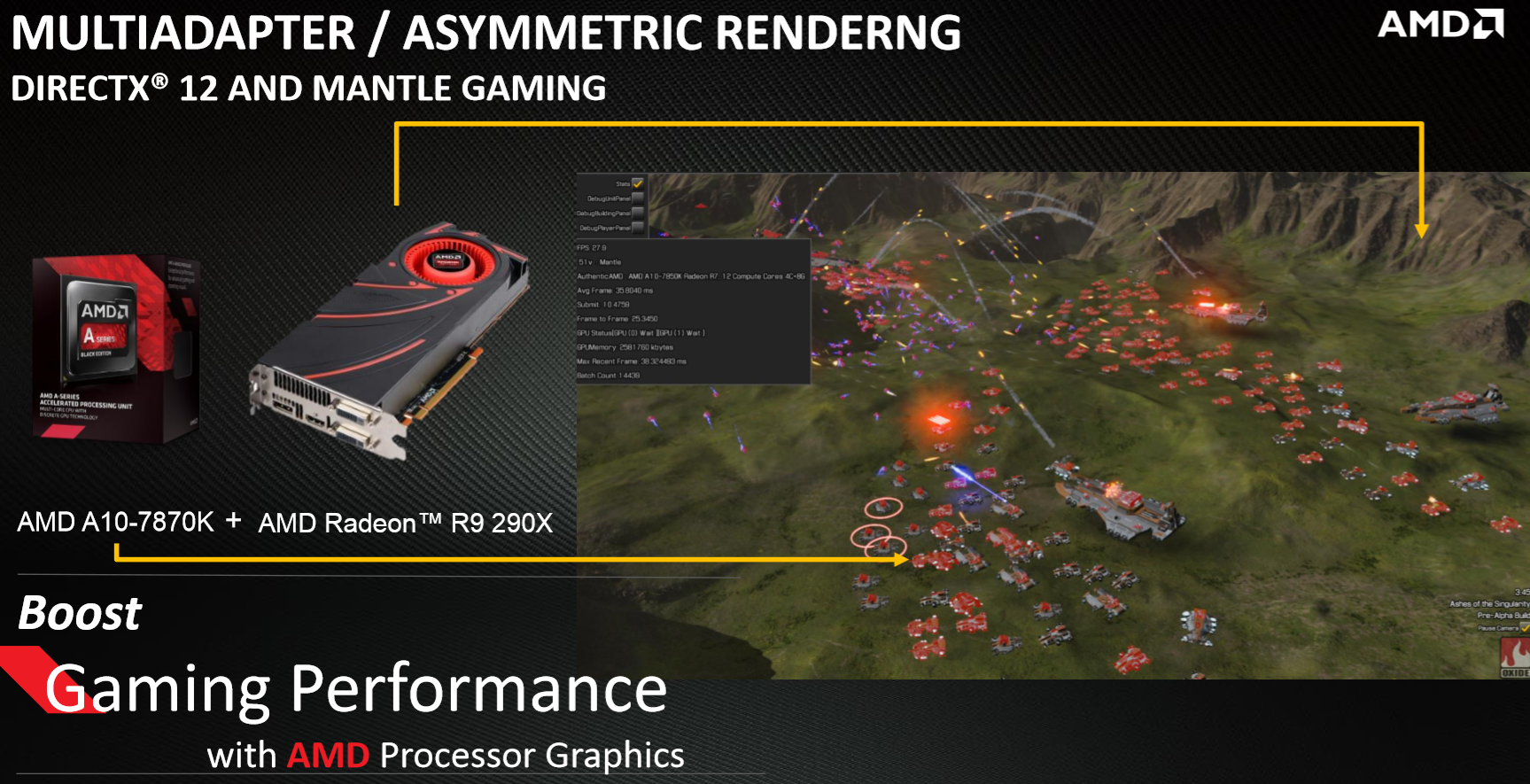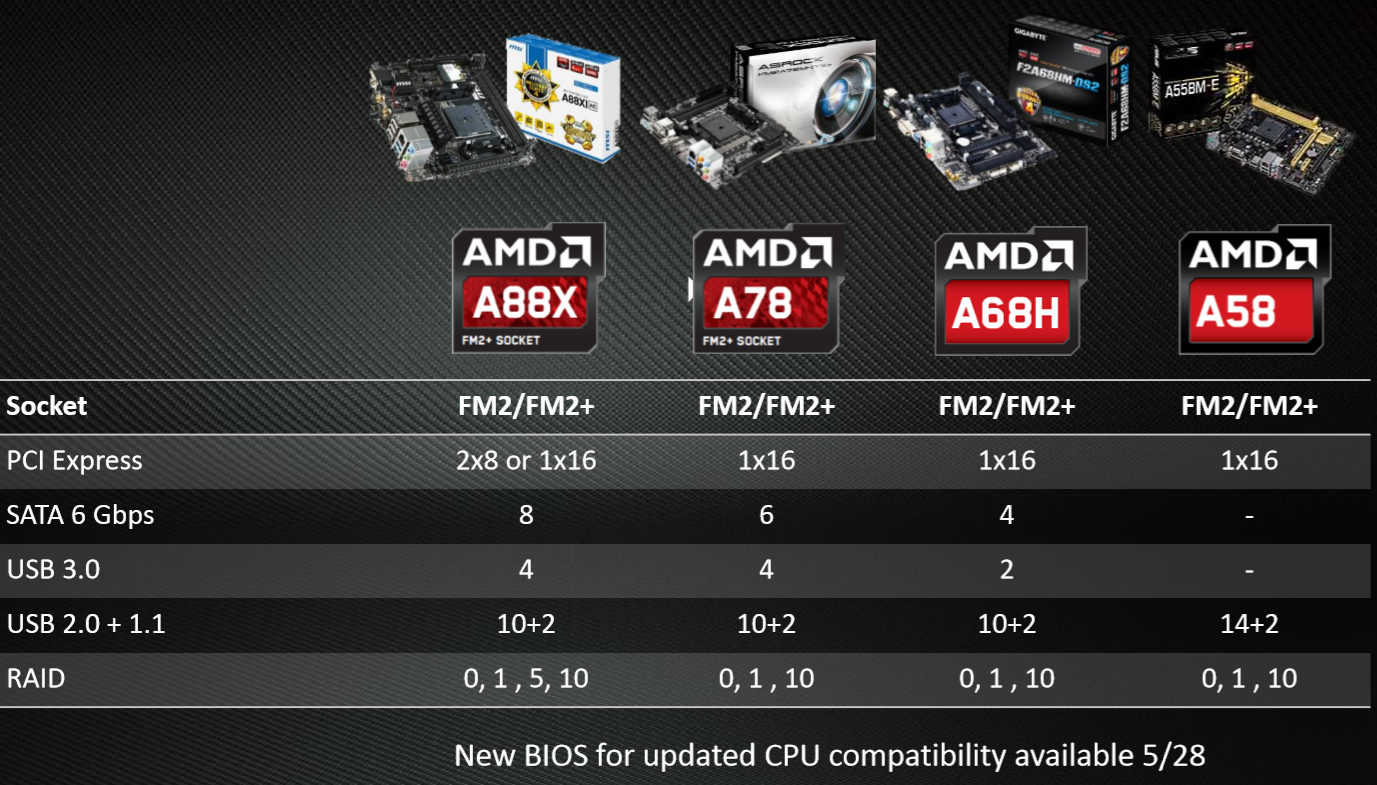Don't Call It 'Godavari;' AMD Updates Kaveri APUs With DX12, FreeSync And VSR Support
It's not that often that you see a product in the computer hardware market last as long as Kaveri has. First shown to the world at CES 2014, AMD's desktop APUs have maintained relevance for the last 18 months, and show no signs of stopping now.
A new driver released today brings cutting edge technology to the aging platform. With it comes support for both DirectX 12 and FreeSync. These new cutting edge technologies have just breathed new life into all existing Kaveri-based APUs, ensuring even more performance is yet to be seen from these all-in-one processors.
There's also a new flagship APU, as well. Component partners (and shameless leakers) have been calling this new chip "Godavari," and there's been some confusion about the nomenclature. To clarify, we'll let AMD's James Prior do the talking:
The A10-7870K is known as "Kaveri Refresh" because the A10-7870K is the same die – same silicon – as the rest of the A-series 7000 processors, which AMD referred to as "Kaveri," which is used in both socketed and BGA packages for desktop and notebook. The project was intended to be only for desktop, and so to reduce confusion AMD dedicated an internal project name to the part definition – it's really a mundane housekeeping thing.
Along with the new driver that updates the existing APU lineup, AMD has launched a new flagship processor, as well. The A10-7870K is the new king of desktop APUs, offering more iGPU power than ever before. Attributing AMD's advanced Kaveri binning process, engineers were able to squeeze an additional 146 MHz out of the refreshed GCN cores.
With the CPU cores clocked 200 MHz higher than the A10-7850K, the new chip is the highest-performing desktop APU ever. When asked about the thermal characteristics of the new APU, AMD noted that the core voltage has been increased ~50mV without increasing the socket power from 95 W. Responding to feedback about past APUs, the more robust heat sink from the FX processors is included in the box. The larger cooler has a copper base and heatpipes. It should allow the fan to spin slower and maintain boost speeds longer.
The extra horsepower that the A10-7870K can deliver enabled the company to introduce AMD Virtual Screen Resolution to the APU lineup for the first time; the feature is unique to the flagship processor. VSR is especially compelling to those in emerging markets that may not have readily available 1080p panels. In situations where gamers are displaying on lower-resolution panels, VSR can render the image at 1080p and display the native resolution. This process significantly improves visual fidelity.
Get Tom's Hardware's best news and in-depth reviews, straight to your inbox.
With the launch of the new APU, AMD is directly targeting the 75 million gamers playing the top four most popular games in e-sports today. StarCraft II, League of Legends, DOTA 2, and Counter-Strike: Global Offensive were used as the benchmark goals for the new APU, setting out to attain playable frame rates at high settings in each of these titles.
The company claimed that without the addition of a discrete GPU, the A10-7870K will run these four games at well over 30 fps. It even goes so far as to say the standalone APU will outperform an Intel Core i3-4360 paired with an Nvidia GT 740 in all of the aforementioned games running max settings at 1080p.
Even with the capable iGPUs, AMD knows many of the gamers buying an APU today will also want to pair it with a discrete GPU at some point. This will be even more relevant once Windows 10 arrives. The power of the integrated GPU can then be harnessed and used as an advantage when paired with another GPU. The main discreet graphics card can handle the bulk of the workload, and the APU's GCN cores can be used to do a portion of the work.
This concept isn't new, and it has been used with AMD's Dual Graphics technology for some time. However, currently, the iGPU is disabled with all but a very limited selection of GPUs. DirectX 12 will have the ability to work with multiple different GPUs from different architectures simultaneously. Direct access to the GPU cores is a function built into the new DX12 API, making it much easier for game designers to make use of all the available resources. Having Direct X 12 support on the iGPUs means that no part of the APU will go to waste.
One of the biggest advantages of running DirectX 12 is the increase in draw calls per second. AMD has stated that early testing with Futuremark's 3DMark API Overhead feature test has shown that Kaveri has plenty more throughput available when harnessed correctly. The use of DX12 can increase draw calls per second on an A10-7870K by as much as 11x.
During a recent briefing, Oxide Games' co-founder Dan Baker showed some of this in action using the upcoming title Ashes of the Singularity output onto a 4K Ultrawide monitor. Baker said that the game is heavily threaded, so it needed to leverage the full potential of the A10-7870k by utilizing all the resources available. Where there are too many actions for the discrete R9 290X in the PC, the 8 GCN GPU cores from the APU picked up the slack, keeping the game running smoothly in even the largest of battles. Oxide made the game highlight units being rendered by the APU in red, and it was amazing to see how much was being done by the integrated GPU cores.
The A10-7870k is AMD's latest addition to its A-Series APU lineup and is available now with a suggested price of $137 USD. The new processor maintains use of the current A-series chipset support, and will post and boot to Windows out of the box. A new BIOS update is required to unlock FreeSync, DX12 and VSR capabilities which is available now.
Follow us @tomshardware, on Facebook and on Google+.
Kevin Carbotte is a contributing writer for Tom's Hardware who primarily covers VR and AR hardware. He has been writing for us for more than four years.
-
photonboy Please stop saying "The power of the integrated GPU can then be harnessed and used as an advantage when paired with another GPU.."Reply
That's a feature DX12 supports however it must be implemented by the game developer at extra time (thus money).
We have no idea how common this will be nor what expectations we should have for support but suggesting it will just naturally occur once we upgrade to Windows 10 is very, very misleading. -
Puiucs ReplyPlease stop saying "The power of the integrated GPU can then be harnessed and used as an advantage when paired with another GPU.."
i don't think game devs will have the time to implement this, but it's almost certain that game engines will implement it sometime soon (Unreal Engine, Unity, CryEngine, etc). I expect it to be a default feature in a year or 2 for the big name engines.
That's a feature DX12 supports however it must be implemented by the game developer at extra time (thus money).
We have no idea how common this will be nor what expectations we should have for support but suggesting it will just naturally occur once we upgrade to Windows 10 is very, very misleading.
Having DX12 features already implemented in the engine used for the game brings dev costs down. -
photonboy Reply15950012 said:Please stop saying "The power of the integrated GPU can then be harnessed and used as an advantage when paired with another GPU.."
i don't think game devs will have the time to implement this, but it's almost certain that game engines will implement it sometime soon (Unreal Engine, Unity, CryEngine, etc). I expect it to be a default feature in a year or 2 for the big name engines.
That's a feature DX12 supports however it must be implemented by the game developer at extra time (thus money).
We have no idea how common this will be nor what expectations we should have for support but suggesting it will just naturally occur once we upgrade to Windows 10 is very, very misleading.
Having DX12 features already implemented in the engine used for the game brings dev costs down.
My beef is we really have NO IDEA how easy or how common this will actually be, yet I'm constantly seeing comments that imply it will simply happen like it's a given. Also similar comments about mixing AMD and NVidia GPU's or stacking VRAM.
Even if it looks like a "simple" feature to implement it still adds not only to development time (to troubleshoot GPU combos) and technical support after release.
Sure, I'd like to see it used but again that's not my complaint. -
silverblue "It’s not that often that you see a product in the computer hardware market last as long as Kaveri has."Reply
Piledriver certainly has that beat, though you did say "not that often". -
Creme It's nice that they're bringing in features like VSR to their lower end models. The igpu can run some games in 1080p or 900p, and if you own a 768p monitor, then downsampling with these chips is viable.Reply
They advertise DX12, I wonder if the feature level is different from other Radeons. -
burnneck Reply15950012 said:Please stop saying "The power of the integrated GPU can then be harnessed and used as an advantage when paired with another GPU.."
i don't think game devs will have the time to implement this, but it's almost certain that game engines will implement it sometime soon (Unreal Engine, Unity, CryEngine, etc). I expect it to be a default feature in a year or 2 for the big name engines.
That's a feature DX12 supports however it must be implemented by the game developer at extra time (thus money).
We have no idea how common this will be nor what expectations we should have for support but suggesting it will just naturally occur once we upgrade to Windows 10 is very, very misleading.
Having DX12 features already implemented in the engine used for the game brings dev costs down.
My beef is we really have NO IDEA how easy or how common this will actually be, yet I'm constantly seeing comments that imply it will simply happen like it's a given. Also similar comments about mixing AMD and NVidia GPU's or stacking VRAM.
Even if it looks like a "simple" feature to implement it still adds not only to development time (to troubleshoot GPU combos) and technical support after release.
Sure, I'd like to see it used but again that's not my complaint.
If only AMD can invest with their own game publishing company that would support their innovative solution. It will be easier for developer to invest time programing for those solution, as there would be a test case for them to follow suite.
-
red77star All marketing mimmick especially talk about DX12. At the end of the day you still need decent video card to push frames, your games won't magically work better because of DX12 which seems only selling point for Microsoft in regard to Windows 10.Reply
